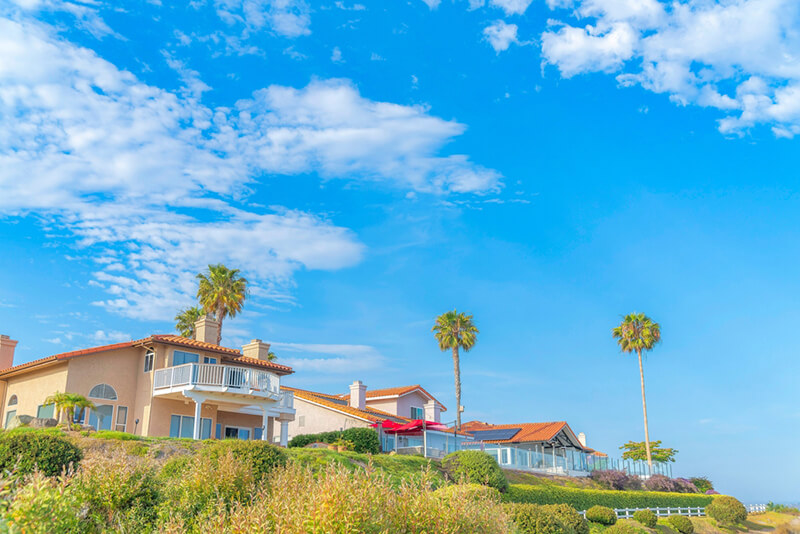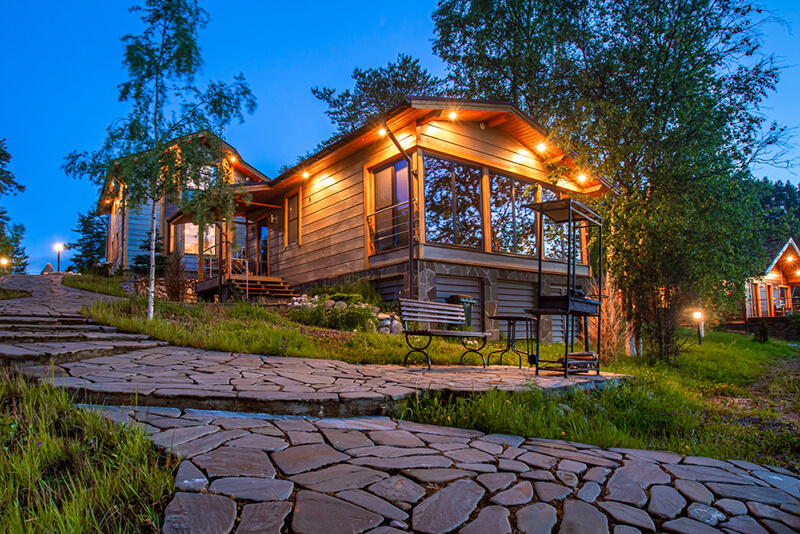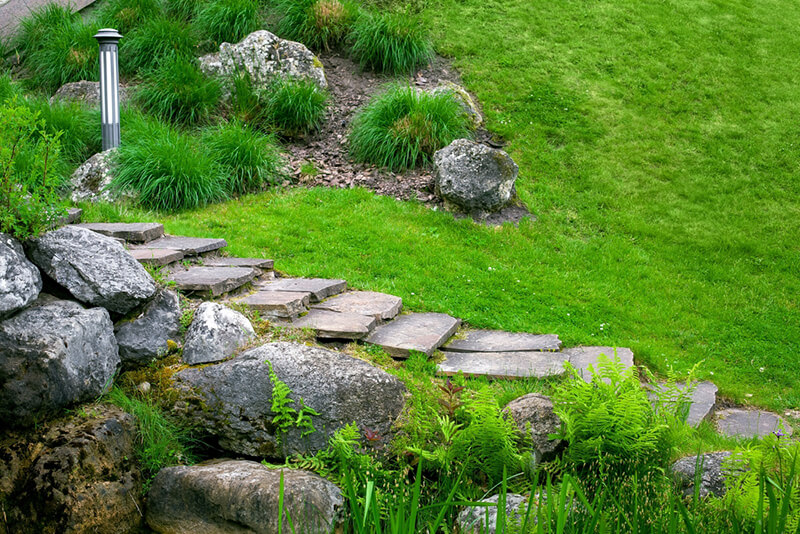
Hillside Landscaping: Advice From The Pros
Published: 16/08/2022 | Updated: 29/03/2023
Having a hillside house is a luxury that many homeowners thrive to have. And why not when it gives their homes that majestic elevated look and showcases their home’s architecture.


However, having a plain, bland hill can easily turn your beautiful house into something that came out of a horror movie. No one wants that, right?
Well, if you have a hill in your backyard or your house was built on a hill, then you're in luck! Shrubhub is here to give you all the guidance you need for a unique hill design.
This guide will help you add a whole new level of intrigue to your property, even if you’re a total beginner in landscaping.
We'll give you some tips on how to choose the right plants, how to create pathways and curves, and how to use accessories to enhance the look of your hill. So read on and get inspired!
Contact Your Local Utility Companies
The first thing you need to do before you start decorating your hill is to contact your local utility companies or homeowners association.
Make sure you know where all the utility lines are, along with any underground pipes and power lines.
The last thing you want is to hit a gas line or electricity line during construction, so calling these companies will help get them out of the way before you start digging up anything.
Phone lines can also cause problems, as they're usually buried very close to power lines. Cable providers are a bit more lenient in terms of where their cables run (in most cases), but it's still good practice to call them as well—especially if there are any trees growing near where your cable comes into your house!
Decide on a Theme or Design Style
The next step is to decide on a theme. Choose a theme that will fit in with the rest of your landscape and style of home, but consider changing it up just enough to make the hill a stunning centerpiece on its own.
You may also want to consider weather patterns as well. This way, if you have plants that are only in bloom during certain times of year, it won't look out of place when you're not able to enjoy them for most months.
Also be sure to choose something that fits with your lifestyle; if you live in Arizona and love going out on hot summer days, having a winter display will probably not work well for you in this case!
Add Stone Steps and Benches

Stone steps are a great addition to any landscape, especially when you’re looking to create a path. They can be made from any kind of stone, but the most common option is flagstone.
This type of stone comes in many different shapes and sizes so that you can choose the right look for your home or business!
Add stone benches at intervals along your walkway as well. These will not only provide seating space for visitors but also add some visual interest with their varied forms and textures.
If you’re short on time or money, consider building simple wooden benches instead — they won’t be quite as attractive as the ones made by professionals but they will still look nice!
Create Levels on Your Hill
When landscaping your hill, it's important to create levels in order to make the most of the space. One easy way to do this is by using retaining walls.
Retaining walls are a great way to hold soil in place, and they can also be used to create different levels on a hill. You can use different materials for your retaining walls, such as concrete, stone, or brick.
When designing your retaining walls, be sure to take into account the materials you'll be using, as well as the slope of the hill.
If you're not sure how to get started, consult with a professional landscape designer. They'll be able to help you create a beautiful and functional landscape for your home. And if you don’t want to waste a lot of money on that, then you can check out our landscaping options!
Consider Pavers for Hardscaping
When it comes to landscaping your hill, there are a few things to keep in mind. For starters, you'll need to use pavers to stabilize the slope. By using pavers, you'll create a solid foundation for your plants and flowers.
Pavers are durable and can withstand harsh weather conditions, making them the ideal option for outdoor applications such as patios, walkways, and driveways.
Pavers can be installed on any grade surface by using a bedding system to ensure proper drainage. If you have hills that need leveling then pavers may not be the best choice since there will be no way for water or other liquids to drain away from it.
Test Your Soil
Testing your soil can tell you a lot about it, including what plants will grow there, how much fertilizer to use, and how much water.
Soil testing can also help determine if you have clay or sandy soils. Clay soils typically need more water than sandy ones, but they can be harder to work with because they don't drain well and tend to hold onto water after rain or irrigation events.
To test for these things:
- Dig up three holes in the garden bed (one at each corner) and take some dirt from each hole.
- Mix all three piles together in one container so they're homogeneous.
- Take this mix back outside where it's dryer and form a ball with it using your hands.
- If the ball holds its shape, but breaks apart easily into pieces when squeezed between your fingers then this indicates that your soil has plenty of organic matter (good news you have loam soil!).
- If the ball is moist, sticky and holds its shape, then you probably have clay soil. In this case you will need to modify your soil by adding more sand. You can consult a gardener if you’re not sure how.
- If the ball doesn’t even form and falls apart when opening your hand. That means you have a sandy soil with low nutrients which will require a lot of fertilizers.
Start With a Small Area
Decorating your Hills can be intimidating, so don’t feel like you have to do it all at once. Start with one area and see what works for you before you begin decorating the rest of your Hills.
This will help keep things fresh and exciting when starting out, rather than having everything look the same throughout all of your Hills. It’s also easier to see what works and what doesn’t when starting out on a smaller scale!
Before planting anything in your Hills, make sure that it's suitable for plants (in other words: not too wet or sandy).
Also check if there are water drainage issues in certain areas by conducting a little experiment by placing some rocks or wood onto different parts of each hillside — this will tell you whether or not those areas would be suitable for planting anything at all!
Test the Drainage on Your Hill

In order to know how best to landscape your hill, you need to know if it can handle the water that will run off your landscaping. You also need to be aware of drainage in case you're building something large on a steep hill.
If you've already built a structure, use these tips to help with drainage:
- Test the drainage by digging a trench around your project and look at how fast the water drains out of it.
- If the soil is too dense or clay-like (you'll see brownish-colored soil when there's too much clay), add sand and compost manure until it is loose enough for good drainage but not so loose that it becomes sandy or sandy-loam.
- If your site does not drain quickly enough or if there are standing pools after rain storms, consider installing French drains which are basically ditches filled with gravel that lead away from buildings and prevent them from getting flooded by runoff from hillsides above them.
Look for Plants That Will Thrive in These Conditions
When looking for plants, consider the conditions of your hills. Look for native plants that will thrive in dry or wet conditions, or acidic soils and alkaline soils.
If you are placing a plant in an area with full sun exposure, look for plants that will survive there.
If you want to create green walls around your home or along walkways, consider using grasses instead of vines or shrubs. They require less maintenance than other types of greenery and can be mowed down regularly without harming them too much.
Here are a few plants that are perfect for a hillside:
- Mint: Mint is perfect for a hillside because it's a vigorous grower and it will spread quickly, covering the hill in no time.
- Ivy: Ivy is a climbing plant that will quickly cover the hill in green leaves, providing shade and privacy.
- Ferns: Ferns are a great option for a shady hillside, as they thrive in cool, moist environments.
Incorporate a Water Feature
There are many ways to incorporate a water feature into your garden. For example, you could use one of the many types of fountains or ponds that are available in the market today.
Fountains and ponds can be made from a variety of materials and often come with lights or sound features to add an extra element to your garden.
If you want to create a DIY water feature, then you might want to check out some of our other blogs on DIY ponds and fountains.
If you want something more natural, consider using stone tiles or paving stones around your water feature; this will create an interesting backdrop for plants and flowers that grow around the edges of any outdoor space where there are children playing in between them!
Taking this into account,
Decorating hillsides can be challenging, but the results can be stunning. It requires some thought as you need to consider how much sun will reach your plants, how well they will grow in the conditions created by your choices, and what plants might look good together when planted on an incline ground.
You'll need to take into account drainage issues too; if water pools on sloping surfaces it could cause problems for roots which aren't receiving enough oxygenated soil around them (a problem which gets worse over time).
With these tips, you can start decorating your hillside. The most important thing to remember is that it’s a slow process. Take your time and test the soil, check the drainage, plant some plants first and then add more later on if they do well in this environment.
Don’t get discouraged if things don’t work out right away; after all, you have plenty of time! And as always if you run into any problems, or not sure what to do with your landscaping, check out Shrubhub.com professional yard design services.


